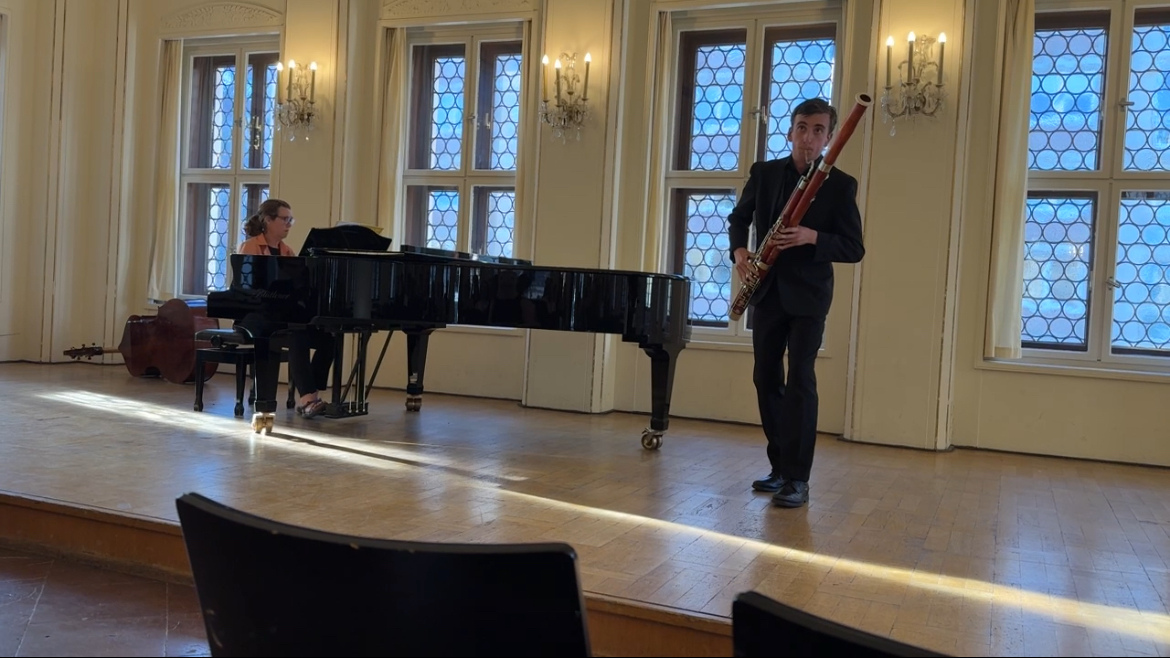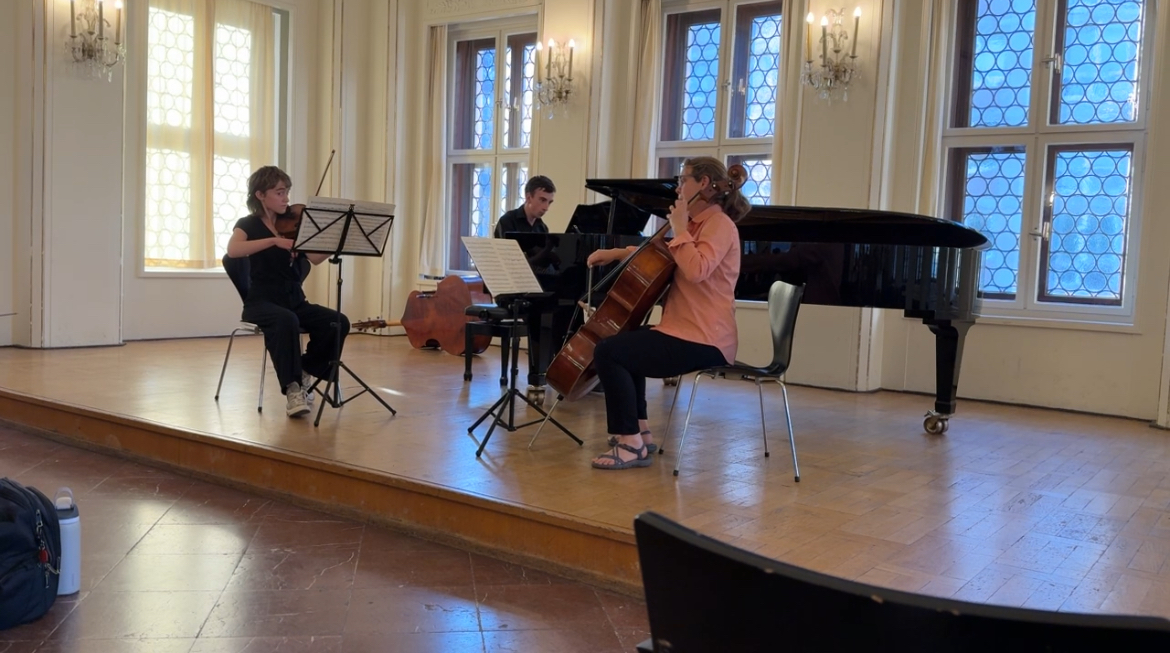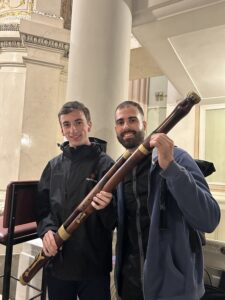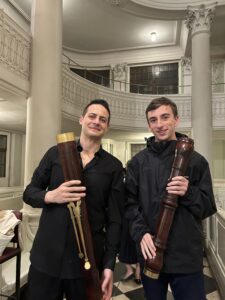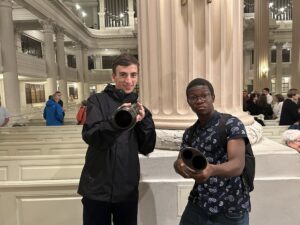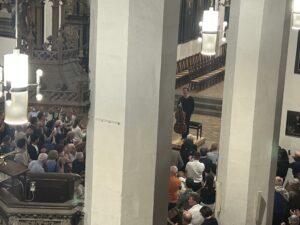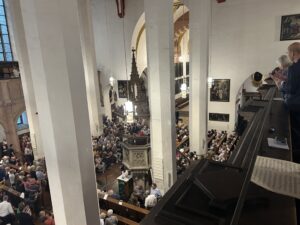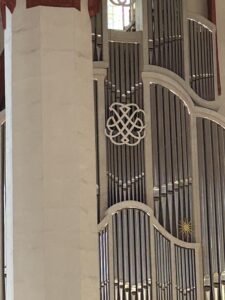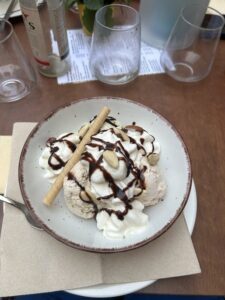Getting to perform a solo is an opportunity I will never turn down. I was super excited when the bassoon professor at Princeton, Bob Wagner, suggested Bach’s second viola da gamba sonata to Ruth as a solo piece I could perform in Leipzig. I have a lot of experience playing music written for strings on bassoon, so I knew it would be a challenge, but one I would be willing to take on.
Playing string music on wind instruments is a challenge for a number of reasons. The first, and probably the most obvious, is that string players don’t need to breathe to play their instruments. String music is often written with very long passages that a wind player would need to add pauses during in order to breathe. This was probably the biggest challenge in learning this piece; in the entire allegro section of the first movement, there are only five total places to breathe in 106 measures, which sections as long as 28 measures with not a single rest to breathe. To figure out how to solve this, I listened to several recordings to find potential places to add some rubato, cut a note short, etc. without disrupting the flow of the piece, so I could take time to breathe without making it sound rushed or cutting any notes out. This piece is usually played on string instruments (cello and double bass, mostly), so there were some spots I had to come up with on my own to mess with the tempo a little.
From learning about a wide range of baroque pieces in Leipzig and listening to many different interpretations of these pieces, I’ve noticed baroque musicians tend to not use that much vibrato. This was another reason playing this music on bassoon proved to be difficult: I am so used to playing pieces of classical composers like Mozart and Tchaikovsky that I tend to naturally put vibrato on any longer notes. Going back to listen to the recording of my performance, I am noticing that I did that quite a bit with this movement. If I had more time or another opportunity to perform this, I would probably listen to more recordings and get a better sense of how much vibrato baroque players use with this piece to make it fit more with the music of the period.
The third challenge of this piece was not playing it too fast (particularly the allegro section). As mentioned earlier, I am very classically trained, so when I see a tempo marking like “allegro”, I usually want to go relatively fast. When first learning this section of the first movement, it took me a while to realize I was learning it way too fast. I then listened to some recordings and noticed they were going quite a bit slower than I was taking it. I came to realize the way I was playing it made it sound very rushed, and unlike most baroque music. However, the first time I played it at a more reasonable tempo, I noticed there were a lot more challenges arising with breathing. Playing it faster meant I didn’t have to find nearly as many places to breathe. This goes back to what I talked about earlier, with finding places throughout the movement to breathe without disrupting the flow of the piece.
Getting to do this piece with Ruth was a lot of fun, and taught me a lot about baroque music and performance practice of the time. Going forward, I hope to expand my repertoire with other music like this. For now, that wraps up my time and studies in Leipzig!
